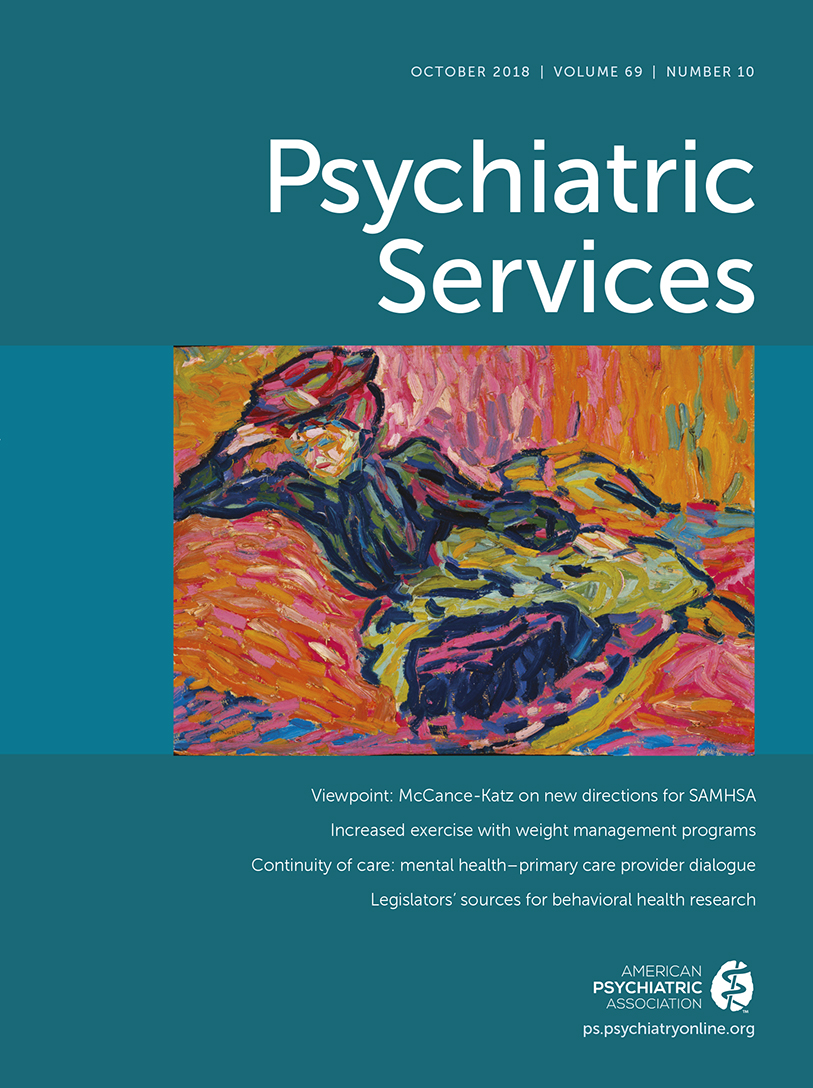Prioritizing Safety Among Patients With Serious Mental Illness
The study by Vermeulen and colleagues in this issue adds to the small but growing body of literature on patient safety for people with serious mental illness. The authors found that in Pennsylvania, incidents concerning patient safety were common in inpatient psychiatric units at acute care general hospitals. This finding is consistent with prior studies demonstrating high rates of medical errors and adverse events during psychiatric as well as medical and surgical hospitalizations for people with serious mental illness. These errors and events have been shown to be associated with significant physical harm and mortality, making improving patient safety a critical but often overlooked component of a comprehensive strategy to reduce premature mortality among people with serious mental illness, who die an average of 10–20 years earlier than the overall population.
The field now needs to turn to developing and disseminating effective strategies to improve patient safety for this vulnerable population. We consider three categories of patient safety interventions for people with serious mental illness: universal interventions addressing pathways to poor safety shared by patients with and without serious mental illness and relevant for psychiatric, general medical, and surgical settings; interventions addressing pathways to patient safety incidents that are most likely to occur in inpatient psychiatric settings; and interventions addressing pathways to medical errors and adverse events most likely to exist in general medical and surgical settings.
Many patient safety issues and contributing factors among people with and without serious mental illness and across care settings include errors from delays in diagnosis, medication-related errors, and nosocomial infections. Research has demonstrated effective interventions to address these issues, for example improving team communication and using checklists and automated decision supports. Evidence shows that patient safety can be improved when interventions are implemented through team-based quality improvement processes, such as the comprehensive unit-based safety protocol.
Vermeulen and colleagues examined patient safety in the inpatient psychiatric unit context, which poses several unique pathways to medical errors and patient safety events. Safety issues can result from inappropriate use of restraints, which are more commonly used in psychiatric than in other types of inpatient services. In addition, patients in psychiatric units may have symptoms that lead them to act aggressively toward others or have high risk of self-harm, including suicide. Interventions to improve safety in the inpatient psychiatric setting should address these safety risks in addition to the universal risks discussed above. As Vermeulen and colleagues note, one such intervention, Safewards, was shown in a clustered randomized controlled trial to reduce harmful situations that could compromise patient safety, including assaults and self-harm. Safewards includes components designed to improve staff-patient rapport, increase staff de-escalation skills, and build patients’ ability to manage agitation.
Pathways to poor patient safety for patients with serious mental illness in general medical and surgical settings differ from those in inpatient psychiatric units. While psychiatric unit staff have extensive training in and experience with serious mental illness and are accustomed to the psychotic symptoms, cognitive deficits, and communication impairments some people with serious mental illness experience, general medical and surgical staff typically lack such training and experience. Research shows that among people with serious mental illness in nonpsychiatric inpatient services, presence of active psychiatric symptoms confers high risk of adverse events, supporting the idea that medical and surgical providers’ lack of familiarity with such symptoms may create unique pathways to poor patient safety. For example, staff may incorrectly attribute somatic issues to psychiatric symptoms, resulting in incomplete care or delays in seeking psychiatric consultation; prior research has shown that such delays are associated with elevated likelihood of adverse safety events. To date, no interventions specifically designed to address patient safety risks for people with serious mental illness treated in inpatient medical and surgical settings have been tested; this is a priority for future research. Effective interventions will likely need to incorporate strategies for identification of patients with serious mental illness and appropriate risk stratification, provider training, strategies to ensure better use of psychiatric consultations, and mechanisms to improve provider-patient communication.
Prioritizing patient safety issues in psychiatric and nonpsychiatric heath care settings for persons with serious mental illness is a key component of the multifaceted strategy to improve health and longevity in this group.



